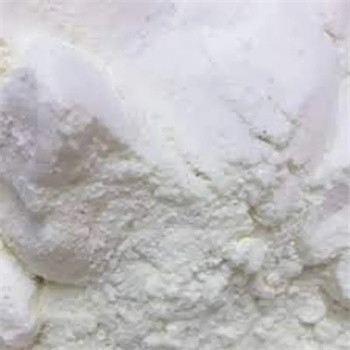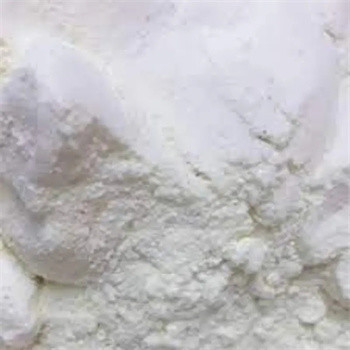Tetracaine/Tetracaina
Description
Tetracaine (also known as amethocaine) is a local anesthetic of the ester anesthetic group. It is mainly used topically in ophthalmology and as an antipruritic, and it has been used in spinal anesthesia.
In biomedical research, tetracaine is used to alter the function of calcium release channels (ryanodine receptors) that control the release of calcium from intracellular stores. Tetracaine is an allosteric blocker of channel function. At low concentrations, tetracaine causes an initial inhibition of spontaneous calcium release events, while at high concentrations, tetracaine blocks release completely.
Tetracaine is the T in TAC, a mixture of 5 to 12 per cent tetracaine, 0.05 per cent adrenaline, and 4 or 10 per hydrochloride used in ear, nose & throat surgery and in the emergency department where numbing of the surface is needed rapidly, especially when children have been injured in the eye, ear, or other sensitive locations.
It is on the World Health Organization's List of Essential Medicines, a list of the most important medication needed in a basic health system.
A systematic review investigated tetracaine for use in emergency departments, especially for IV cannulation in children, in view of its analgesic and cost-saving properties. However, it did not find an improvement in first attempt cannulations.
- What is tetracaine used for?
Tetracaine eye drops are used to numb the eye before surgery, certain tests, or procedures. The eye drops are used to prevent pain during the procedure. Tetracaine belongs to the group of medicines called local anesthetics. It works by blocking the pain signals at the nerve endings in the eye.
(amide) has a relative potency of four, whereas tetracaine (ester) has a relative potency of 10. 16 Prilocaine is less toxic than for a given dose because it has a lesser vasodilatory effect and is metabo- lized faster, so doses of >8 mg/kg can lead to toxic Page 7 Oni et al 501 effects.
- Can you buy tetracaine over the counter?
Eye numbing drops are not available over the counter. These drops should only be applied under the supervision of a medical professional to avoid serious side effects and, in some cases, chemical dependency.
- Is tetracaine a prescription drug?
Tetracaine is a prescription medication used to prevent pain and induce anesthesia. Tetracaine belongs to a group of drugs called local anesthetics. These work by preventing the initiation and transmission of nerve signals.
- How long does tetracaine take to work?
Tetracaine is an esterase type anesthetic with a onset of action of 10–20 seconds and a duration of action of 10–15 minutes. Use of topical anesthetics are very effective at reducing pain, but there use is discouraged secondary to poor wound healing of the corneal epithelium.
- What is another name for tetracaine?
Tetracaine, also known as amethocaine, is an ester local anesthetic used to numb the eyes, nose, or throat.
Basic info
Chemical Name
|
tetracaine |
Synonyms
|
Amethocaine;Tetracaina;Tetrakain;Anetain;2-(dimethylamino)ethyl 4-(butylamino)benzoate; |
CAS No.
|
94-24-6 |
Molecular Formula
|
C15H24N2O2 |
Molecular Weight
|
264.36300 |
PSA
|
41.57000 |
LogP
|
2.69000 |
Numbering system
Properties
Appearance & Physical State
|
White crystalline powder |
Density
|
1.044 g/cm3 |
Boiling Point
|
389.4ºC at 760 mmHg |
Flash Point
|
189.3ºC |
Refractive Index
|
1.537 |
Storage Condition
|
2-8ºC |
Safety info
RTECS
|
DG4725000 |
Safety Statements
|
S22-S36/37 |
HS Code
|
2922499990 |
RIDADR
|
UN 2811 |
Risk Statements
|
R22; R40; R42/43 |
Hazard Codes
|
Xn |
Spectrum

Main Products
CAS 19099-93-5 1-(Benzyloxycarbonyl)-4-piperidinone
CAS 79099-07-3 N-(tert-Butoxycarbonyl)-4-piperidone
CAS 443998-65-01-boc-4-(4-bromo-phenylamtino)-piperidine
CAS 125541-22-2 1-N-Boc-4-(Phenylamino)piperidine
CAS 288573-56-8 1-boc-4-(4-fluoro-phenylamino)-piperidine
CAS 79-03-8 Propionyl chloride
CAS 20320-59-6 BMK oil
CAS 5413-05-8 BMK powder
CAS 5449-12-7 BMK Glycidic Acid
CAS 28578-16-7 PMK ethyl glycidate oil/powder
CAS 1451-82-7 2-bromo-4-methylpropiophenone
CAS 1451-83-8 2-bromo-3-methylpropiophenone
CAS 236117-38-7 2-iodo-1-p-tolyl-propan-1-one
CAS 59774-06-0 1-Hexanone, 2-bromo-1-phenyl-
CAS 94-09-7 Benzocaine 23239-88-5 Benzocaine hydrochloride
CAS 59-46-1 Procaine 51-05-8 Procaine hydrochloride
CAS 721-50-6 Prilocaine
Bromazolam CAS 71368-80-4
Bromadol HCL BDPC CAS 77239-98-6
CAS 2079878-75-2 2-(2-Chlorophenyl)-2-nitrocyclohexanone
Xylazine CAS 7361-61-7
Xylazine Hydrochloride CAS 23076-35-9
Bupivacaine CAS 2180-92-9
Ivermectin CAS 70288-86-7
Gabapentin CAS 60142-96-3
Phenibut CAS 1078-21-3
Methylamine HCL CAS 593-51-1
CAS 145783-14-8 4,6-dichloro-5-nitro-2-(propylsulfanyl)pyriMidine
CAS 91393-49-6 2-(2-chlorophenyl)cyclohexanone
Relate Product:
| Tetracaine hydrochloride |
CAS: 136-47-0 |
| Procaine |
CAS: 59-46-1 |
| Tetracaine |
CAS: 94-24-6 |
| Pramoxine Hydrochloride |
CAS: 637-58-1 |
| Procaine HCl |
CAS: 51-05-8 |
| Dibucaine hydrochloride |
CAS: 61-12-1 |
| Prilocaine |
CAS: 721-50-6 |
| Propitocaine hydrochloride |
CAS: 1786-81-8 |
| Proparacaine hydrochloride |
CAS: 5875-06-9 |
| Articaine hydrochloride |
CAS: 23964-57-0 |
| Levobupivacaine hydrochloride |
CAS: 27262-48-2 |
| Ropivacaine hydrochloride |
CAS: 132112-35-7 |
| Bupivacaine |
CAS: 2180-92-9 |
| Bupivacaine hydrochloride |
CAS: 14252-80-3 |
These common effects and advantages of benzocaine:
- The remarkable feature of benzocaine is that it is easy to bind to the mucous membrane of the mucous membrane or skin surface, and it is not easy to enter the human body to produce toxicity.
- Benzocaine is an important organic synthesis intermediate. Mainly used in the production of medicine, plastics and coatings.
- Benzocaine has an anesthetic effect, based on which anesthetics such as oxoform, oxocaine and neo-osopron can be synthesized, and since then, many excellent local anesthetics of parabens have been synthesized. Analogs like procaine and many procaine. Such anesthetics have the advantages of good stability, fast onset, long maintenance time and small side effects, and thus are widely used.
- The main clinical applications of benzocaine are: temporary relief of pain and itching of the skin, mild burns, sunburn, trauma and bites. The otic preparation is used to alleviate the pain and itching of the acute congestive, concentrated otitis externa, swimming ear inflammation and external use of the ear. It is also effective for toothache, sore throat, mouth ulcers, various hemorrhoids, anal fissures, and genital itching. As a male genital desensitizer, ejaculation is slow. Or an anesthetic lubricant for catheters and endoscopes.
COA
| Test Items |
Specification |
Test Results |
| Appearance |
White crystals or a white crystalline powder |
Conform |
| Identification |
ABE. It appears positive reaction |
| Melting point |
154degree~158degree |
154degree~157degree |
| Acidity |
PH 5.0~6.5 |
PH=5.9 |
| Appearance of solution |
Clear and colourless |
Conform |
| Loss on drying |
≤0.5% |
0.07% |
| Heavy metals |
≤0.0005% |
Conform |
| Related substances |
≤0.05% |
Conform |
| Sulphated ash |
≤0.1% |
0.05% |
| Assay ( on dry basis ) |
99.0-101.0% |
99.58% |
| Conclusion |
Conform to BP200 USP36 |

 Your message must be between 20-3,000 characters!
Your message must be between 20-3,000 characters! Please check your E-mail!
Please check your E-mail!  Your message must be between 20-3,000 characters!
Your message must be between 20-3,000 characters! Please check your E-mail!
Please check your E-mail!




